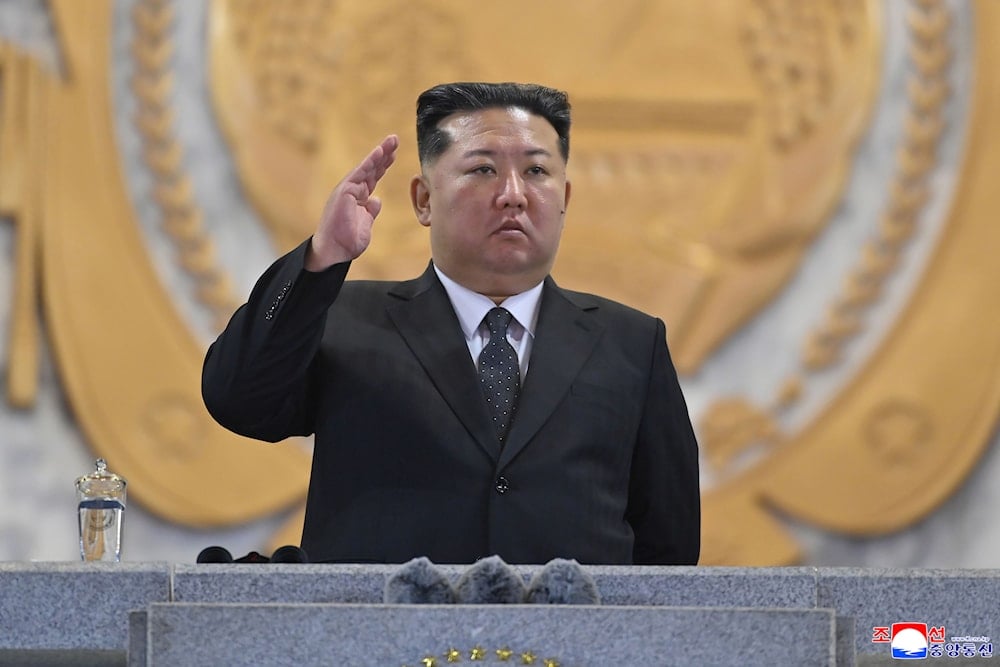DPRK showcases new intercontinental missile at grand military parade
The DPRK unveils its most powerful ICBM at a military parade attended by leader Kim Jong Un
-

In this photo provided by DPRK government, DRRK leader Kim Jong Un attends the military parade marking the 80th anniversary of the founding of the ruling Worker's Party, in Pyongyang, Friday, October 10, 2025. (KCNA/Korea News Service via AP)
The DPRK held a massive military parade on Friday night to mark the 80th anniversary of the founding of its ruling Workers’ Party, unveiling what state media described as its most powerful intercontinental ballistic missile (ICBM) to date.
According to the Korean Central News Agency (KCNA), DPRK leader Kim Jong Un oversaw the event, which featured the debut of the Hwasong-20, hailed as the country’s “strongest nuclear strategic weapon system.”
The parade took place before visiting dignitaries, including Chinese Premier Li Qiang, a Russian delegation led by former President Dmitry Medvedev, and Vietnam’s Communist Party chief To Lam, underscoring Pyongyang’s strengthening ties with key allies amid heightened global tensions.
Earlier this week, Kim Jong Un inspected a newly commissioned 5,000-ton naval destroyer, emphasizing its role in defending national sovereignty and deterring enemy provocations.
A new phase in DPRK’s long-range strike capability
Military analysts say the Hwasong-20 marks a new phase in the DPRK’s long-range strike capability. The missile reportedly has the range to target the US mainland.
“The Hwasong-20 represents, for the moment, the apotheosis of North Korea's ambitions for long-range nuclear delivery capabilities,” said Ankit Panda of the Carnegie Endowment for International Peace as quoted by Reuters.
“The system is likely designed for the delivery of multiple warheads... Multiple warheads will increase stresses on existing US missile defense systems and augment what Kim sees as necessary to achieve meaningful deterrence effects against Washington.”
In his address, Kim Jong Un praised the country’s armed forces for their “heroism,” not only in safeguarding the homeland but also in “outposts of socialist construction.”
“Our army should continue to grow into an invincible entity that destroys all threats,” Kim declared.
The celebrations also coincided with talks between Kim and Medvedev, during which the Russian envoy highlighted the “sacrifice of North Korean soldiers fighting for Russia” in its ongoing military campaign in Ukraine, remarks that further underlined the growing strategic alignment between Pyongyang and Moscow.
Kim expressed his readiness to deepen cooperation with Russia and expand bilateral exchanges “to achieve common goals,” KCNA reported.
A new multipolar order
China, Russia, and the DPRK are tightening their strategic partnership amid rising tensions with the West. The three nations are aligning across diplomatic, military, and economic fronts, presenting themselves as a united bloc pushing back against US and allied influence.
Moscow and Pyongyang have intensified high-level exchanges, with joint commemorations of historic Soviet-Korean alliances highlighting the depth of their ties. At the same time, Beijing continues to serve as the primary economic partner for both Moscow and Pyongyang, expanding trade, energy cooperation, and infrastructure links despite sanctions pressure.
Military cooperation is also deepening, with Russia and China conducting joint exercises and enhancing security dialogues. While China’s engagement with the DPRK is more restrained, its close partnership with Moscow indirectly strengthens Pyongyang’s position.
Analysts view the alignment as part of a broader shift toward a multipolar order, with Beijing, Moscow, and Pyongyang united by common adversities and strategic interests.
More recently, Iran has become a more prominent ally, particularly by increasingly cooperating with Moscow and Beijing, sparking concerns of a growing CRINK alliance.
Read more: The emerging CRINK alliance: A new challenge to US influence

 3 Min Read
3 Min Read








